 W
WApollo 11 was the spaceflight that first landed humans on the Moon. Commander Neil Armstrong and lunar module pilot Buzz Aldrin formed the American crew that landed the Apollo Lunar Module Eagle on July 20, 1969, at 20:17 UTC. Armstrong became the first person to step onto the lunar surface six hours and 39 minutes later on July 21 at 02:56 UTC; Aldrin joined him 19 minutes later. They spent about two and a quarter hours together outside the spacecraft, and they collected 47.5 pounds (21.5 kg) of lunar material to bring back to Earth. Command module pilot Michael Collins flew the Command Module Columbia alone in lunar orbit while they were on the Moon's surface. Armstrong and Aldrin spent 21 hours, 36 minutes on the lunar surface at a site they named Tranquility Base before lifting off to rejoin Columbia in lunar orbit.
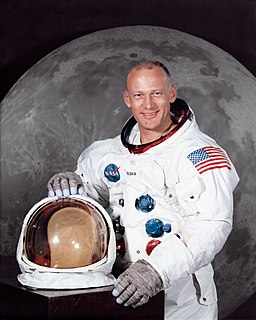 W
WBuzz Aldrin is an American former astronaut, engineer and fighter pilot. Aldrin made three spacewalks as pilot of the 1966 Gemini 12 mission, and as the lunar module pilot on the 1969 Apollo 11 mission, he and mission commander Neil Armstrong were the first two humans to land on the Moon.
 W
WNeil Alden Armstrong was an American astronaut and aeronautical engineer, and the first person to walk on the Moon. He was also a naval aviator, test pilot, and university professor.
 W
WMichael Collins is an American astronaut who flew the Apollo 11 command module Columbia around the Moon while his crewmates, Neil Armstrong and Buzz Aldrin, made the first crewed landing on the surface. He was a test pilot and major general in the U.S. Air Force Reserves.
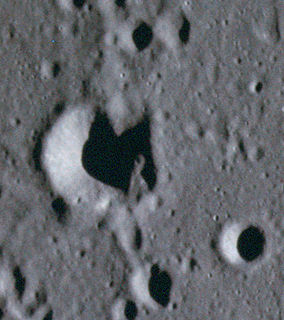 W
WAldrin is a tiny impact crater located on the southern part of the Mare Tranquillitatis, to the east of Sabine. It is located about 50 kilometers to the northwest of the Apollo 11 landing site, Tranquility Base. Named after Buzz Aldrin, the crater is the westernmost of a row of three craters named in honor of the Apollo 11 crew members. About 30 kilometers to the east is the landing site of the Surveyor 5 lunar probe.
 W
WApollo 11 is a 2019 American documentary film edited, produced and directed by Todd Douglas Miller. It focuses on the 1969 Apollo 11 mission, the first spaceflight from which men walked on the Moon. The film consists solely of archival footage, including 70 mm film previously unreleased to the public, and does not feature narration, interviews or modern recreations. The Saturn V rocket, Apollo crew consisting of Buzz Aldrin, Neil Armstrong, and Michael Collins, and Apollo program Earth-based mission operations engineers are prominently featured in the film.
 W
WThe Apollo 11 50th Anniversary commemorative coins were issued by the United States Mint in 2019 to commemorate the 50th anniversary of the first crewed landing on the Moon by Apollo 11 astronauts Neil Armstrong and Buzz Aldrin. Consisting of a gold half eagle, two different sizes of silver dollars, and a copper-nickel clad half dollar, each of the four was issued in proof condition, with all but the larger silver dollar also issued in uncirculated. The gold coins were struck at the West Point Mint, the silver at the Philadelphia Mint and the base metal half dollars at the mints in Denver and San Francisco.
 W
WApollo 11 was the first human spaceflight to land on the Moon. In the decades after it took place, widespread celebrations have been held to celebrate its anniversaries.
 W
WApollo 11 was the first human spaceflight to land on the Moon. The 1969 mission's wide effect on popular culture has resulted in numerous portrayals of Apollo 11 and its crew, Neil Armstrong, Buzz Aldrin, and Michael Collins.
 W
WThe Apollo 11 lunar sample display is a commemorative podium style plaque display consisting of four rice-size dust particle specimens, the recipient's flag and two small metal plates attached with descriptive messages. The Apollo 11 podium style commemorative wooden plaque displays were given out as gifts in 1970 by President Richard Nixon to 135 countries worldwide, the 50 states of the United States and its territories.
 W
WApollo in Real Time is an interactive, multimedia website that presents the Apollo 11, Apollo 13, and Apollo 17 missions as they happened at the time by compiling and synchronizing thousands of hours of audio and video recordings, transcripts, and photographs. Apollo historian Ben Feist created the Apollo 11 and Apollo 17 real-time sites, and was a NASA contractor by the time he created the Apollo 13 real-time site. Air & Space magazine describes the Apollo 13 site as "one of the most ambitious multimedia history sites ever created".
 W
WArmalcolite is a titanium-rich mineral with the chemical formula (Mg,Fe2+)Ti2O5. It was first found at Tranquility Base on the Moon in 1969 during the Apollo 11 mission, and is named for Armstrong, Aldrin and Collins, the three Apollo 11 astronauts. Together with tranquillityite and pyroxferroite, it is one of three new minerals that were discovered on the Moon. Armalcolite was later identified at various locations on Earth and has been synthesized in the laboratory. (Tranquillityite and pyroxferroite were also later found at various locations on Earth). The synthesis requires low pressures, high temperatures and rapid quenching from about 1,000 °C to the ambient temperature. Armalcolite breaks down to a mixture of magnesium-rich ilmenite and rutile at temperatures below 1,000 °C, but the conversion slows down with cooling. Because of this quenching requirement, armalcolite is relatively rare and is usually found in association with ilmenite and rutile, among other minerals.
 W
WArmstrong is a small lunar impact crater located in the southern part of the Mare Tranquillitatis. It lies about 50 kilometers to the northeast of the Apollo 11 landing site, Tranquility Base. Named after American astronaut Neil Armstrong, the crater is the easternmost of the row of three craters named in honor of the Apollo 11 crew members. To the north is the Ranger 8 impact site.
 W
WBritish television coverage of the Apollo 11 mission, man's first to land on the Moon, lasted from 16 to 24 July 1969. All three UK television channels, BBC1, BBC2 and ITV, provided extensive coverage. Most of the footage covering the event from a British perspective has now been wiped or lost.
 W
WCarrying the Fire: An Astronaut's Journeys is the autobiography of the Gemini 10 and Apollo 11 astronaut Michael Collins. It was released in 1974 with a foreword by the aviator Charles Lindbergh. The book was re-released in 2009 to coincide with the 40th anniversary of the first crewed lunar landing, and again for its 50th anniversary, in 2019.
 W
WCollins is a tiny lunar impact crater located on the southern part of the Mare Tranquillitatis. It is located about 25 kilometers to the north of the Apollo 11 landing site, Tranquility Base. Named after American astronaut Michael Collins, the crater is the central member of the row of three craters named in honor of the Apollo 11 crew members. About 15 kilometers to the west-northwest is the landing site of the Surveyor 5 lunar probe.
 W
WCommand module Columbia (CM-107) is the spacecraft that served as the command module during Apollo 11, which was the first mission to land humans on the Moon. Columbia is the only spacecraft of the Apollo 11 mission that returned to the Earth.
 W
WThe Eisenhower dollar was a one-dollar coin issued by the United States Mint from 1971 to 1978; it was the first coin of that denomination issued by the Mint since the Peace dollar series ended in 1935. The coin depicts President Dwight D. Eisenhower on the obverse, and a stylized image honoring the 1969 Apollo 11 Moon mission on the reverse, with both sides designed by Frank Gasparro. It is the only large-size U.S. dollar coin whose circulation strikes contained no silver.
 W
WFirst Man: The Life of Neil A. Armstrong is the official biography of Neil Armstrong, the astronaut who became the first man to walk on the Moon, on July 20, 1969. The book was written by James R. Hansen and was first published in 2005 by Simon & Schuster. The book describes Armstrong's involvement in the United States space program, and details his personal life and upbringing.
 W
WJohn Royer "Jack" Garman was a computer engineer, former senior NASA executive and noted key figure of the Apollo 11 lunar landing. As a young specialist on duty during the final descent stage on 20 July 1969 he dealt with a series of computer alarms which could have caused the mission to be aborted.
 W
WGerhard Wilhelm Goetze was a German-born Ph.D. researcher and inventor in Atomic physics. He was primarily known for his work on the Moon-to-Earth Apollo TV camera making live broadcast in both brilliant sunlight and pitch darkness possible. Goetze discovered the Secondary Electron Conduction (SEC) effect which amplified light through high-speed electrons deposited in thin film storage targets. The SEC tube was additionally used in ground-based astronomy, inspection of integrated circuits, electron-microscope-based biological tissue study, security, and night vision. Goetze received ten patents for his inventions.
 W
WThe Apollo 11 goodwill messages are statements from leaders of 73 countries around the world on a disc about the size of a 50-cent piece made of silicon that was left on the Moon by the Apollo 11 astronauts.
 W
WHelicopter 66 is a United States Navy Sikorsky Sea King helicopter used during the late 1960s for the water recovery of astronauts during five missions of the Apollo program. It has been called "one of the most famous, or at least most iconic, helicopters in history", was the subject of a 1969 song by Manuela, and was made into a die-cast model by Dinky Toys. In addition to its work in support of NASA, Helicopter 66 also transported the Shah of Iran during his 1973 visit to the aircraft carrier USS Kitty Hawk.
 W
WJohn Hirasaki is an American mechanical engineer who worked for the United States' National Aeronautics and Space Administration (NASA) during the Apollo 11 mission, the first crewed mission to the Moon. In 1969 he – along with Buzz Aldrin, Neil Armstrong, Michael Collins, and William Carpentier – became one of the first five known humans to view lunar rocks inside Earth's atmosphere.
 W
WUSS Hornet (CV/CVA/CVS-12) is an Essex-class aircraft carrier built for the United States Navy (USN) during World War II. Completed in late 1943, the ship was assigned to the Fast Carrier Task Force in the Pacific Ocean, the navy's primary offensive force during the Pacific War. In early 1944, she participated in attacks on Japanese installations in New Guinea, Palau and Truk among others. Hornet then took part in the Mariana and Palau Islands campaign and most of the subsidiary operations, most notably the Battle of the Philippine Sea in June that was nicknamed the "Great Marianas Turkey Shoot" for the disproportionate losses inflicted upon the Japanese. The ship then participated in the Philippines Campaign in late 1944, and the Volcano and Ryukyu Islands campaign in the first half of 1945. She was badly damaged by a typhoon in June and had to return to the United States for repairs.
 W
WLittle West is a small crater in Mare Tranquillitatis on the Moon, east of the Apollo 11 landing site known as Tranquility Base.
 W
WLunar Module Eagle (LM-5) is the spacecraft that served as the crewed lunar lander of Apollo 11, which was the first mission to land humans on the Moon. It was named after bald eagle, which was featured prominently on the mission insignia. It flew from Earth to lunar orbit on the command module Columbia, and then was flown to the Moon on July 20, 1969, by astronaut Neil Armstrong with navigational assistance from Buzz Aldrin. Eagle's landing created Tranquility Base, named by Armstrong and Aldrin and first announced upon the module's touchdown.
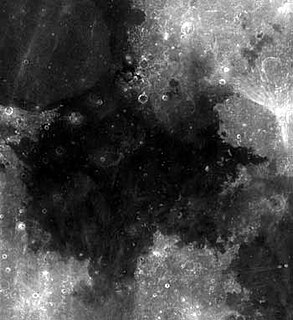 W
WMare Tranquillitatis is a lunar mare that sits within the Tranquillitatis basin on the Moon. The mare material within the basin consists of basalt formed in the intermediate to young age group of the Upper Imbrian epoch. The surrounding mountains are thought to be of the Lower Imbrian epoch, but the actual basin is probably Pre-Nectarian. The basin has irregular margins and lacks a defined multiple-ringed structure. The irregular topography in and near this basin results from the intersection of the Tranquillitatis, Nectaris, Crisium, Fecunditatis, and Serenitatis basins with two throughgoing rings of the Procellarum basin. Palus Somni, on the northeastern rim of the mare, is filled with the basalt that spilled over from Tranquillitatis.
 W
WThe Apollo 11 missing tapes were those that were recorded from Apollo 11's slow-scan television (SSTV) telecast in its raw format on telemetry data tape at the time of the first Moon landing in 1969 and subsequently lost. The data tapes were used to record all transmitted data for backup.
 W
WMoonshot: The Flight Of Apollo 11 is a 2009 book by Brian Floca about the Apollo 11 spaceflight to the Moon.
 W
WMoonwalk One is a 1971 feature-length documentary film about the flight of Apollo 11, which landed the first humans on the Moon. Besides portraying the massive technological achievement of that event, the film places it in some historical context and tries to capture the mood and the feel of the people on Earth when man first walked on another world.
 W
WOf a Fire on the Moon is a work of non-fiction by Norman Mailer which was serialised in Life magazine in 1969 and 1970, and published in 1970 as a book. It is a documentary and reflection on the Apollo 11 Moon landing from Mailer's point of view.
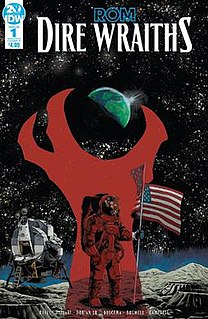 W
WRom: Dire Wraiths is a limited comic book series by Chris Ryall, Luca Pizzari, Guy Dorian Sr and Sal Buscema. It is based on the toy of the same name by Hasbro, and is published by IDW Publishing.
 W
WJulian Weisel Scheer was an American merchant mariner, journalist, public relations professional, and author. He is best known as the assistant administrator of public affairs for the National Aeronautics and Space Administration in Washington, D.C., from 1962 to 1971.
 W
WJudy Sullivan is an American retired biomedical engineer who worked for NASA during the Apollo 11, Apollo 10, Apollo 9, Apollo 8 and Gemini 12 missions. For the Apollo 9 and Apollo 11 missions, she was lead biomedical engineer. Sullivan was the only woman in her department, and one of only a relative few women working for NASA in a technical role at that time. She was the first woman engineer hired by NASA for spacecraft testing.
 W
WThe Susan B. Anthony dollar is a United States dollar coin minted from 1979 to 1981, when production was suspended due to poor public acceptance, and then again in 1999. Intended as a replacement for the larger Eisenhower dollar, the new smaller one-dollar coin went through testing of several shapes and compositions, but all were opposed by the vending machine industry, a powerful lobby affecting coin legislation. Finally, a round planchet with an eleven-sided inner border was chosen for the smaller dollar.
 W
WTranquility Base is the site on the Moon where, in July 1969, humans landed and walked on another celestial body for the first time. On July 20, 1969, Apollo 11 crewmembers Neil Armstrong and Buzz Aldrin landed their Apollo Lunar Module Eagle at approximately 20:17:40 UTC. Armstrong exited the spacecraft six hours 39 minutes after touchdown, followed 19 minutes later by Aldrin. The astronauts spent two hours 31 minutes examining and photographing the lunar surface, setting up several scientific experiment packages, and collecting 47.5 pounds (21.5 kg) of dirt and rock samples for return to Earth. They lifted off the surface on July 21 at 17:54 UTC.
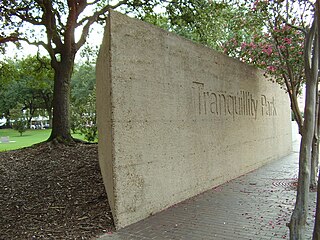 W
WTranquillity Park is a park in Downtown Houston, Texas, between Walker and Rusk Streets, and west of Smith Street, with the United States federal courts building for the Southern District of Texas on one side and Houston City Hall on the other. It takes its name, notably differing in spelling, from the Sea of Tranquility, where man first landed on the Moon during the Apollo 11 mission on July 20, 1969. First opening to visitors in the summer of 1979, Tranquillity Park was officially dedicated on the tenth anniversary of the historic lunar landing. On bronze plaques placed along the main entrance, the first words transmitted by Neil Armstrong from the Moon, "Houston, Tranquillity Base here. The Eagle has landed," are written in 15 languages. A replica of one of the footprints left on the Moon by Neil Armstrong is also on display inside the park.
 W
WWest crater is a small crater in Mare Tranquillitatis on the Moon, east of the Apollo 11 landing site, which is known as Tranquility Base. The name of the crater was formally adopted by the IAU in 1973.